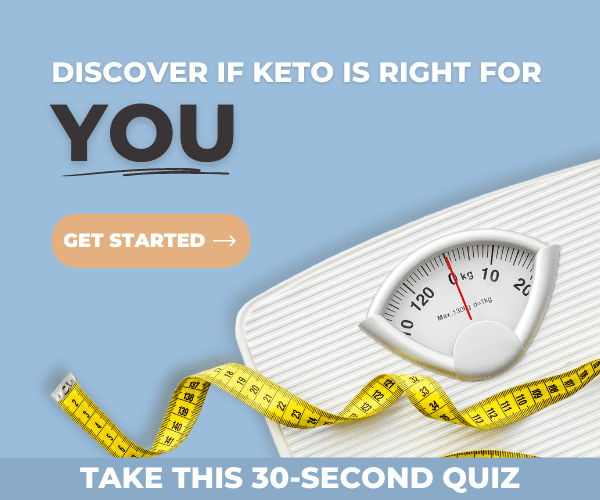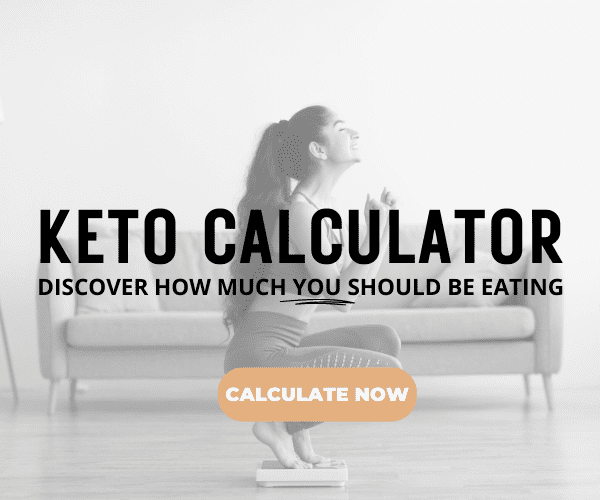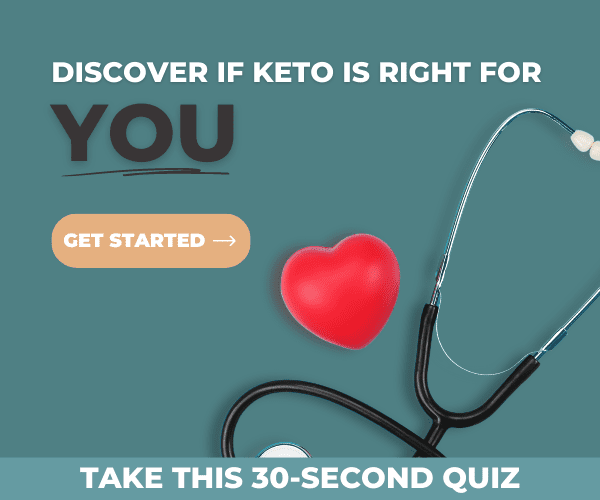
Organ meats were highly valued and widely eaten many years ago, but today this tradition has faded. Liver and onions is one example of a popular dish, and yes, liver is a keto-friendly superfood! Nowadays, most people rarely or never consume organ meats. If you fall into this category, you could be missing out on nutritional benefits and on a tasty addition to your low-carb diet. Let’s discuss why you should eat organ meats on keto.
What Are Organ Meats?
Organ meats are the organs of animals prepared and consumed as food. Organ meats are sometimes called ‘offal.’ The most commonly consumed organ meats come from pigs, lambs, goats, chickens, and ducks.
Our hunter-gatherer ancestors didn’t just eat muscle meat and waste the valuable nutritious organs! They also ate the brains, intestines, and other parts of the animal in a more nose-to-tail approach. Today, organ meats are left behind, and most people focus on eating the muscle meats as steaks, drumsticks, breasts, or ground into mince. [1]
Liver is the most popular type of organ meat. Liver is a nutritious superfood and a detox organ. The other most commonly consumed types of organ meat are heart, kidneys, sweet bread, tongue, and tripe. Sweetbreads don’t taste sweet; instead this is a name for the pancreas and thymus glands. Tripe refers to the lining of animal stomach. Most tripe is from cattle.
Benefits of Organ Meats on a Keto Diet

The nutrient profile of organ meat varies depending on the organ type and the animal. Organ meats are typically more nutritious than muscle meats, and they contain high amounts of B vitamins like B12 and folate (also known as B9). You can also get plenty of high-quality protein and minerals from organ meats, like iron, selenium, zinc, magnesium, and other vitamins like A, D, E, and K. Animal protein gives you all nine essential amino acids for optimal bodily functioning. Organ meats offer lots of additional vitamins and minerals.
Nutrient Profile
To put this in perspective, cooked beef liver has: [2]
- 27 grams of protein
- 175 calories
- 1,386% of the RDI for vitamin B12
- 739% of the RDI for copper
- 522% of the RDI for vitamin A
- 201% of the RDI for riboflavin
More Affordable
Because organ meats have declined in popularity (but certainly not nutrition), they’re typically more affordable than muscle meats. Consuming organ meats can also be considered a more ethical option that reduces food waste.
Bioavailable Heme Iron
Organ meats contain bioavailable heme iron that’s better absorbed by your body compared to non-heme iron found in plant foods. [3] [4]
Satiety
High-protein diets have been shown to increase feelings of satiety and decrease appetite and hunger pangs, especially diets involving good quality protein like organ meats. High-protein diets might also promote weight loss and boost metabolism. [5] [6] [7]
Muscle Mass
The high-quality protein in organ meats is important for building and maintaining muscle mass. [ref ID = 8] [9]
Nutrition
The B vitamins aren’t the only stars of the organ meat show; choline is also found in high amounts in organ meats. Choline is an essential nutrient for liver, muscle, and brain health, and lots of people are deficient. [10] [11]
What About Cholesterol?
Yes, liver and organ meats do contain cholesterol, but studies show the cholesterol you consume in your diet has little to no effect on the cholesterol in your bloodstream. Your liver produces cholesterol and regulates production based on your dietary cholesterol intake. If you consume more dietary cholesterol, your body responds by producing less. Foods high in cholesterol have a minor effect on total blood cholesterol levels. [12] [13]
The cholesterol controversy continues, but studies show the amount of cholesterol from food also has little to no effect on the risk of heart disease. With heart disease, other factors are at play, such as inflammation and infection, and more studies are needed. [14]
What About Gout?
Gout is a type of arthritis involving higher levels of uric acid in the blood, which results in swollen and tender joints. Liver contains purines, which form uric acid in the body.
If you’re dealing with gout, you might need to avoid or limit your intake of organ meats. This doesn’t necessarily mean eating liver causes gout. More research is also needed in this area. Various factors can increase the risk of developing gout, with dietary factors only playing a small role (about 12% of cases). [15]
It’s important to note that while high purine consumption is linked to gout attacks in those who already have hyperuricemia (high levels of uric acid in the blood), purine intake alone isn’t enough to trigger gout attacks. Uric acid levels often decrease during gout attacks to normal ranges. The nutrients, minerals, and healthy fats in liver and organ meats can actually help prevent gout attacks. Some symptoms of gout exist without the crystals, leading many people to believe gout is more of a liver problem as well as a fructose (sugar) problem. Inflammation might also be involved.
It’s always best to visit your doctor or healthcare practitioner if you have gout or any concerns about your diet and if you’re considering adding or removing a food from your diet.
Adding Organ Meats to Your Ketogenic Diet
Organ meats are among the most nutrient-dense foods on the planet, with vitamins and minerals that are more difficult to obtain from other foods. One benefit of the waning popularity of organ meats is the affordable price and availability. Enjoying organ meats brings you nutrition at an affordable price!
Organ meats have potent and unique flavors, and it might take some time for you to develop a taste for them. Start with milder offal like chicken livers, or add organ meats to a slow-cooked stew with other gamier-tasting meats like lamb shanks. You can disguise the flavor of ground-up organ meats by adding them to mince dishes like Bolognese or meatballs. Try a ratio of one-third organ meats to two-thirds ground beef and make nutritious meatballs!

Devour a tasty keto recipe featuring organ meats:
References
O’Dea, K. (1991). Traditional diet and food preferences of Australian aboriginal hunter-gatherers. Philos Trans R Soc Lond B Biol Sci, 334(1270), 233-40. DOI: 10.1098/rstb.1991.0112
Self Nutrition Data. Beef, Variety Meats and By-Products, Liver, Cooked, Pan-Fried, Nutrition Facts & Calories, Beef, variety meats and by-products, liver, cooked, pan-fried Nutrition Facts & Calories (self.com)
Monsen, E. R. (1988). Iron nutrition and absorption: Dietary factors which impact iron bioavailability. J Am Diet Assoc, 88(7), 786-90.
Beck, K. L., Conlon, C. A., Kruger, R., & Coad, J. (2014). Dietary determinants of and possible solutions to iron deficiency for young women living in industrialized countries: A review. Nutrients, 6(9), 3747-76. DOI: 10.3390/nu6093747
Weigle, D. S., Breen, P. A., Matthys, C. C., Callahan, H. S., Meeuws, K. E., Burden, V. R., & Purnell, J. Q. (2005). A high-protein diet induces sustained reductions in appetite, ad libitum caloric intake, and body weight despite compensatory changes in diurnal plasma leptin and ghrelin concentrations. American Journal of Clinical Nutrition, 82(1), 41-8. DOI: 10.1093/ajcn.82.1.41
Johnston, C. S., Day, C. S., & Swan, P. D. (2002). Postprandial thermogenesis is increased 100% on a high-protein, low-fat diet versus a high-carbohydrate, low-fat diet in healthy, young women. Journal of the American College of Nutrition, 21(1), 55-61. DOI: 10.1080/07315724.2002.10719194
Leidy, H. J., Armstrong, C. L. H., Tang, M., Mattes, R. D., & Campbell, W. W. (2010). The influence of higher protein intake and greater eating frequency on appetite control in overweight and obese men. Obesity (Silver Spring), 18(9), 1725-1732. DOI: 10.1038/oby.2010.45
Lord, C., Chaput, J. P., Aubertin-Leheudre, M., Labonte, M., & Dionne, I. J. (2007). Dietary animal protein intake: Association with muscle mass index in older women. J Nutr Health Aging, 11(5), 383-7.
Campbell, W. W., Barton, M. L., Cyr-Campbell, D., Davey, S. L., Beard, J. L., Parise, G., & Evans, W. J. (1999). Effects of an omnivorous diet compared with a lactoovovegetarian diet on resistance-training-induced changes in body composition and skeletal muscle in older men. American Journal of Clinical Nutrition, 70(6), 1032-9. DOI: 10.1093/ajcn/70.6.1032
Zeisel, S. H., & Costa, K-A. (2009). Choline: An essential nutrient for public health. Nutrition Reviews, DOI: 10.1111/j.1753-4887.2009.00246.x
Costa, K-A., Niculescu, M. D., Craciunescu, C. N., Fischer, L. M., & Zeisel, S. H. (2006). Choline deficiency increases lymphocyte apoptosis and DNA damage in humans. American Journal of Clinical Nutrition, 84(1), 88-94. DOI: 10.1093/ajcn/84.1.88
Jones, P. J., Pappu, A. S., Hatcher, L., Li, Z. C., Illingworth, D. R., & Connor, W. E. (1996). Dietary cholesterol feeding suppresses human cholesterol synthesis measured by deuterium incorporation and urinary mevalonic acid levels. Arterioscler Thromb Vasc Biol, DOI: 10.1161/01.atv.16.10.1222
Lecerf, J-M., & Lorgeril, M. (2011). Dietary cholesterol: From physiology to cardiovascular risk. British Journal of Nutrition, 106(1), 6-14. DOI: 10.1017/S0007114511000237
Kratz, M. (2005). Dietary cholesterol, atherosclerosis and coronary heart disease. Handb Exp Pharmacol, DOI: 10.1007/3-540-27661-0_6
Chen, L. X., & Chumacher, H. R. (2008). Gout: An evidence-based review. J Clin Rheumatol, DOI: 10.1097/RHU.0b013e3181896921










